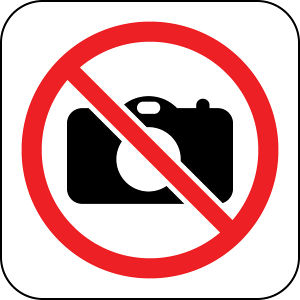| This section is actively undergoing a major edit for a while. To help avoid edit conflicts, please do not edit this section while this message is displayed or contact the editor (Steiny) of this page. | This page was last edited at 19:13, 25 October 2013 (UTC) 4426 days ago. |
Hint:
25.5.2013: UPrenner: create the article page
25.10.2013 UPrenner: work-in-progress
Overview
With the cue list several scenes can be summarized by light atmospheres to a sequence. This offers you the possibility of organizing the individual cues at an event with a firmly predefined expiry of the light atmospheres. This module is similarly suitable for theater events and comparable event forms with that like the script also.

|
| Figure 1: Create a new cue |
Per cue which takes effect however only within the cue list or an effect a one dazzling time as well as a duration you (describe in the Effektsequencer) as hold time can be indicated. Values of a cue remain active on the version until they are overwritten explicitly, for example by another cue.
All cues are managed in the cue library and can be chosen and reused from there.
Description
One or several cues form a cue list. The maximum number of cues per cue list is only limited by the resources of your computer. Playing a cue list means the sequential execution of all individual cues under consideration of the the one dazzling time and duration (hold time). The cues can also manually be further switched. Several cue lists can expire at the same time (parallel operation).
E. g. you use the cue tool at theater applications and everywhere there where it suffices, simple cues after a particular duration (hold time) further add-on. The scene tool works resource loading substantially less than the chaser tool. The cue list is always worked off sequentially and to be more precise as of the cue which is just highlighted. For the beginning of the play, so the first entry must be highlighted.
Controls

|
| Figure 2: The cue list |
So that the button « GO & raquo; the manual further wiring can work, the following conditions must be filled for:
- The scene list must be represented (Button » play « is clicked).
- The respective cue must have manually as a duration (hold time) (adjust time to zero and one then still reduce tenths). If a duration (hold time) is adjusted, this is taken into account which yes also can be quite practical (to let e.g. a sequence of light atmospheres go with firm times and switch to the next scene manually only later again).
- The cues must be marked with the checking box (hook), they otherwise are deactivated.
At a right click on the cue name opens himself a context menu with the menu item « Set color . . . « a color palette window opens where a color can be selected for the scene name.
| |
If HTP is not necessary, so HTP turn it off in the program settings (depends on the cue definition). |
Module commands
- Modul: Cue list
- Bedeutung von Gerät/Funktion und Kanal
| Gerät/Funktion | Beschreibung | Kanal | Beschreibung |
|---|---|---|---|
| Ausgewählte | Der weitere Befehl wird auf die aktuell ausgewählte Szeneliste angewendet. (Der Befehl Auswählen macht bei dieser Funktion keinen Sinn) |
Start/Stopp | Der Befehl Start/Stopp startet und stopt die ausgewählte Szenenliste für automatischen Ablauf. (Der Befehl sollte im Zusammenhang mit dem T-Flag eingesetzt werden.) |
| Start | Der Befehl Start startet die ausgewählte Szenenliste für automatischen Ablauf. | ||
| Stopp | Der Befehl Stopp stoppt die ausgewählte Szenenliste bei automatischen Ablauf. | ||
| G O ! | Der Befehl G O ! führt die nächste Szene aus der Szeneliste aus. | ||
| Zu akt. Szene scrollen | Der Befehl Zu akt. Szene scrollen scrollt die aktuelle Szene in den sichtbaren Fensterbereich. | ||
| Nächste Vorherige Sonstige Einträge |
Der weitere Befehl wird auf die aktuell nächste, vorherige oder im Dropdown benannte Szeneliste angewendet. | Auswählen | Wählt die nächste, vorherige bzw. die im Dropdown Gerät/Funktion benannte Szenenliste aus. |
| Start/Stopp Start Stopp G O ! Zu akt. Szene scrollen |
siehe oben |
Bedeutung der Flags:
| Flag | Bedeutung | Beschreibung |
|---|---|---|
| T | Umschalt-Modus | Das Flag « Umschalt-Modus » bewirkt, dass die Funktion beim ersten Aufruf ausgeführt wird und beim zweiten Aufruf zurückgesetzt wird. |
| O | Angegebenen Wert verwenden | Das Flag « Angegebenen Wert verwenden » bewirkt, dass der Wert in der Spalte Wert dem entsprechenden Kanal zugeordnet wird. Dieser Wert ist kein DMX-Wert 0 bis 255, sondern ein Prozentwert 0,000 bis 100,000% |
| A | Wert Abfragen | Das Flag « Wert Abfragen » bewirkt, dass sich bei Aufruf des Befehls ein Eingabefenster öffnet, in dem der Prozentwert eingegeben werden kann. |
| I | Wert 0 ignorieren | Das Flag « Wert 0 ignorieren » bewirkt, dass ein Wert von Null ignoriert wird. Wird bei einigen Befehlen benötigt, um eine korrekte Funktion zu gewährleisten. |
Tip(s)
- Folgendermaßen kann man Szenenlisten so konfigurieren, dass beim Erreichen des Endes einer Liste die nachfolgende aktiviert und gestartet wird:
Am Ende jeder Szenenliste ist eine Befehlsszene mit dem Befehl Szenenliste -> Nächste -> Start einzufügen. - Für längere Szenenlisten gibt es seit der Version 2.12 eine Akkumulation der Fade- und Dauerzeiten, um die Liste mit einem Timecode zu synchronisieren.